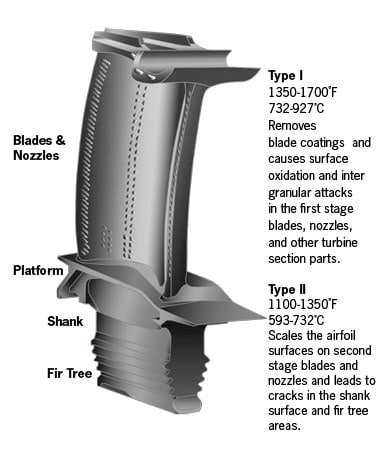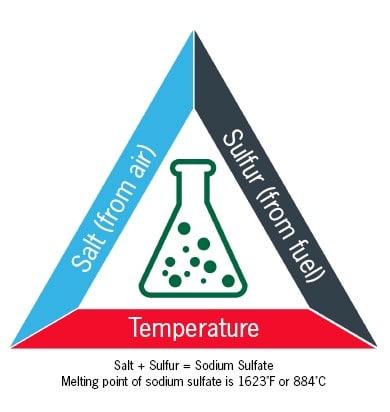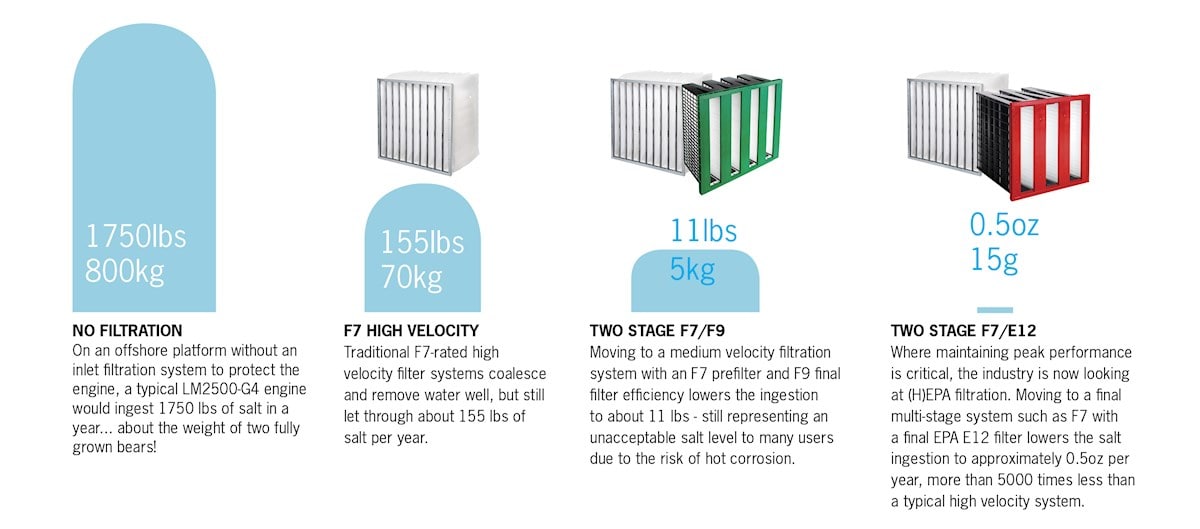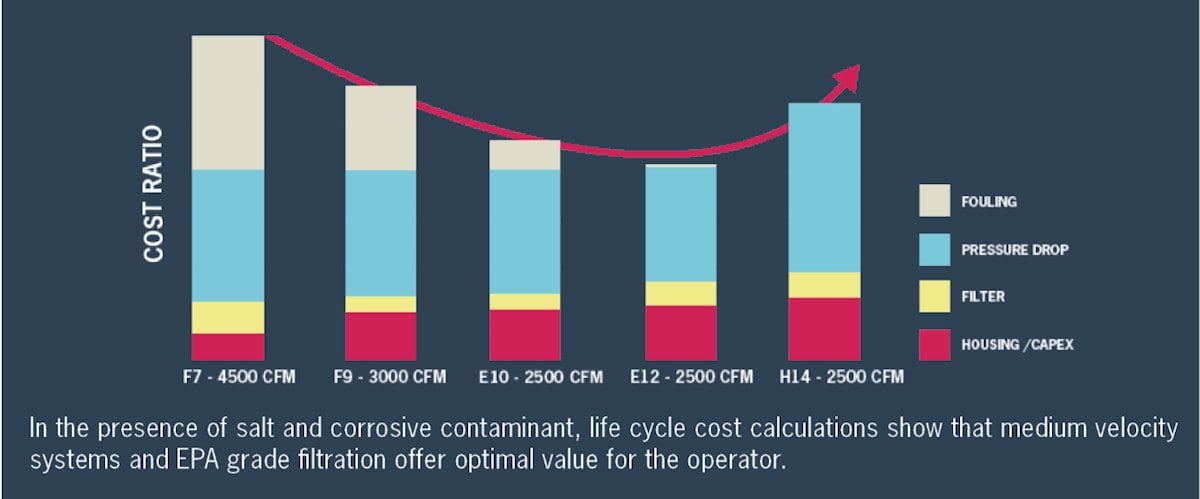Verkar ni på en kustnära plats eller till havs? Tyvärr måste ni då antagligen ta hänsyn till problem relaterade till korrosion såsom bestående skador på turbinblad, prestandaförluster, tidiga driftsstopp och kostsamma reparationer. Ni kan dock fungera korrosionsfritt om ni vidtar rätt åtgärder för att stoppa processen innan den börjar.
Gas Turbine engine performance degradation is classified as either recoverable or non-recoverable. Recoverable performance degradation is usually due to compressor fouling and can normally be overcome by online and offline water washing. Non-recoverable performance degradation is usually caused by rotating internal engine part wear, as well as plugging of cooling channels, erosion & corrosion due to contaminants in the air, fuel and / or water.
Ingested contaminants can result in corrosion of the compressor, combustor and turbine sections of a gas turbine engine. Hot corrosion is the most serious form of corrosion experienced in the turbine section. It is a form of accelerated oxidation that is produced between components and molten salts deposited on its surface. Sodium sulfate, (Na2SO4), is usually the primary deposit instigating hot corrosion, and becomes more severe as the gas turbine section temperature levels increase.


As the turbine firing temperature increases, sodium sulfate liquifies and attacks the coating of the turbine blades, causing irreversible damage and leading to performance loss, early failures and expensive repairs.
Upgrading the inlet system to EPA prevents the salt from entering the inlet, stopping the process of hot-end corrosion caused by sodium sulfate before it begins.


Considering that 98% of a gas turbine’s input is air and 2% is fuel, you can prevent corrosion by removing the causes.
You can take other measures to prevent corrosion by using corrosion-resistant blade material and coating your blades to add longer protection, however, they are temporary solutions since repeated Na2SO4 exposure will eventually take effect.
At some installations, the site conditions, package design, and / or maintenance procedures will contribute to an increased amount of contaminants ingested by the gas turbine engine. To help understand the ‘root cause’ of the issue, contact us and ask for the Hot Corrosion Root Cause Analysis tool.